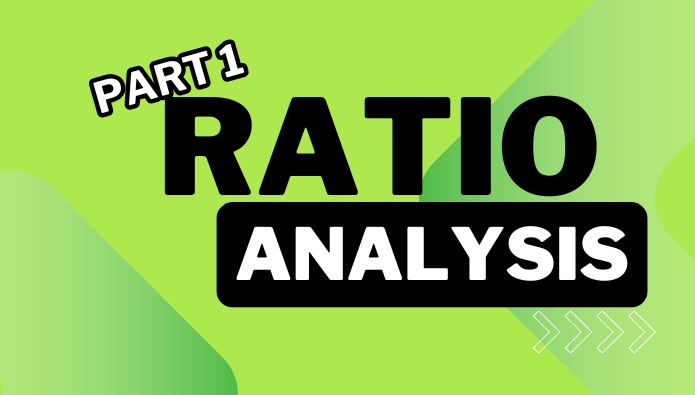Have you ever wondered how companies evaluate their financial health? Or why some businesses secure loans easily while others struggle? If you’re preparing for JAIIB or CAIIB exams, understanding Ratio Analysis is non-negotiable!
📚 JAIIB Study Resources 📚
👉 Check Here
👉 Check Here
👉 Check Here
👉 Get Tests Here
👉 Check Here
- Aspiring JAIIB & CAIIB candidates preparing for the Financial Management section.
- Banking professionals who want to sharpen their financial analysis skills.
- Investors & finance enthusiasts looking to assess companies before investing.
- Business owners who need to evaluate financial performance.
👉 Before we dive in, watch this video for a complete breakdown:
Understanding Ratio Analysis: Complete Breakdown
📌 What is Ratio Analysis? (00:01:03 – 00:02:15)
Ratio Analysis is a financial evaluation tool that helps investors and bankers assess a company’s performance. It involves calculating key ratios using Balance Sheet & Profit and Loss statements to determine liquidity, profitability, and solvency.
- Helps in investment decisions 🔍
- Determines company’s financial health 🏢
- Evaluates loan repayment ability 💰
- Assists in strategic decision-making 📊
- Helps in benchmarking against competitors
📌 Solvency Ratios: Can the Company Repay its Debts? (00:05:05 – 00:06:43)
🔹 Current Ratio = Current Assets / Current Liabilities
A higher Current Ratio (Ideal: 2:1) indicates better short-term financial health.
Example: If a company has ₹90,000 in current assets and ₹30,000 in current liabilities, its current ratio = 3:1, meaning it can easily cover short-term obligations.
🔹 Debt-to-Equity Ratio = Long-Term Debt / Equity
This ratio shows how much a company relies on borrowed funds vs. owner’s equity. A lower ratio (below 1) is preferable.
Example: If a company has ₹6 crore equity and ₹4 crore in long-term debt, its Debt-to-Equity Ratio = 4/6 = 0.67, indicating financial stability.
📌 Profitability Ratios: How Profitable is the Company? (00:34:03 – 00:46:33)
🔹 Gross Profit Ratio = (Gross Profit / Net Sales) × 100
Indicates how efficiently a company produces and sells its goods.
🔹 Net Profit Ratio = (Net Profit / Net Sales) × 100
A higher Net Profit Ratio (Ideal: 10-20%) suggests strong financial performance.
Example: If Net Sales = ₹10,00,000 & Net Profit = ₹3,25,000, then
Net Profit Ratio = (3,25,000 / 10,00,000) × 100 = 32.5%
JAIIB | Advance Financial Management | Chapter 20 | Part 2 [FREE EPDF]
Conclusion: Key Takeaways & Next Steps
- ✅ Ratio Analysis helps assess financial performance & creditworthiness.
- ✅ Solvency ratios ensure a company can handle its debts.
- ✅ Profitability ratios indicate profit efficiency.
- ✅ Activity ratios (Coming Soon!) measure asset utilization.
Now that you understand Ratio Analysis, try calculating these ratios for any company & share your answers in the comments below! Don’t forget to like, share, and subscribe for more banking insights. 🚀
For any enquiry call now: 8360944207





